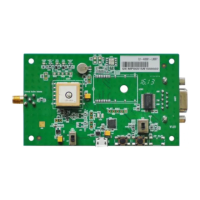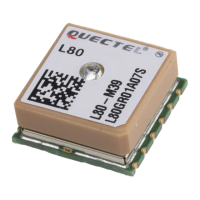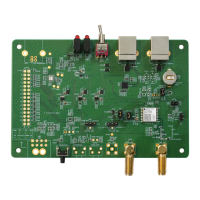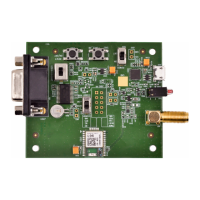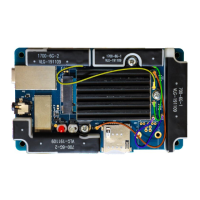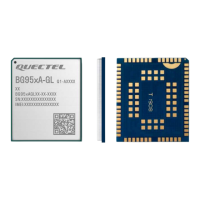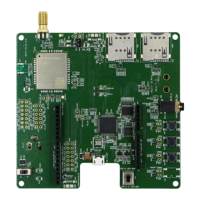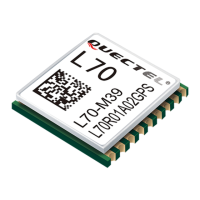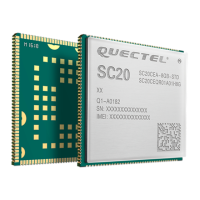GNSS Module Series
L76&L76-L_Hardware_Design 38 / 59
The “Power of GNSS signal” is GNSS signal level. In practical environment, the signal level at the earth
surface is about -130 dBm. “Thermal Noise” is -174 dBm/Hz at 290 K. To improve CNR of GNSS signal, a
LNA could be added to reduce “System NF”.
“System NF”, formula:
“F” is the noise factor of receiver system:
“F1” is the first stage noise factor, “G1” is the first stage gain, etc. This formula indicates that LNA with
enough gain can compensate for the noise factor behind the LNA. In this case, “System NF” depends
mainly on the noise figure of components and traces before first stage LNA plus noise figure of LNA itself.
This explains the need for using an active antenna, if the antenna connection cable is too long.
5.2.3. Active Antenna Reference Design
5.2.3.1. Active Antenna Reference Design without ANTON
The following figure is a typical reference design of an active antenna without ANTON. In this case, the
antenna is powered by the VDD_RF. When selecting the active antenna, it is necessary to pay attention
to operating voltage range.

